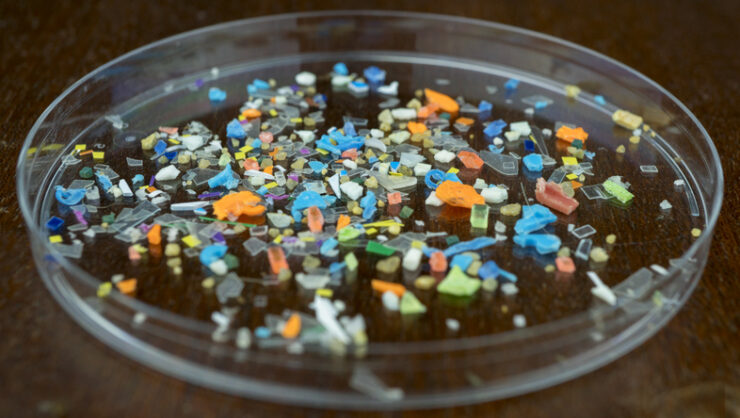News
Unraveling the complexities of microplastics
What happens when plastic particles enter our bodies? And what makes studying microplastics so complex? Belgian newspaper De Morgen explored these and other questions in a comprehensive article. MOMENTUM researchers Nienke Vrisekoop of UMC Utrecht and Emma Kasteel from Utrecht University were interviewed to share their insights.
The journey of microplastics
Microplastics enter our bodies through food, drink, and the air we breathe. “There are indications that some plastic particles can enter the bloodstream via the intestinal wall and the lungs”, Kasteel says. This activates the body’s immune system. Some immune cells will try to eat the particles like a kind of Pacman, similar to how they respond to other foreign substances. But in the case of plastics, this is often to no avail. “When these immune cells die and burst, they give off a signal attracting more immune cells”, explains Vrisekoop. “This then leads to an inflammatory reaction, which plays a role in many diseases.”

How bad are these microplastics for our bodies? “To answer that question, we need to know how much plastic enters our bodies and what these particles cause”, Kasteel notes. “We still know way too little about both.”
Challenges in microplastics research
An important reason for our lack of knowledge is the complexity of microplastics research. “We cannot compare people who are exposed with a comparable control group”, says Kasteel, “this group simply doesn’t exist, because everyone ingests or inhales microplastics.”
In addition, there are thousands of different types of plastics, some containing chemical additives to make them more flexible or less flammable. Harmful substances or micro-organisms from the environment can also attach to the particles.
The plastic particles researchers use in the lab are often smooth, round spheres, while the microplastics we are exposed to have many different shapes and sizes. Vrisekoop: “Plastic ‘in the wild’ can look completely different than in the lab. And that affects the interaction with our body.”
We should also watch out for misinterpreting the results, adds Vrisekoop. Microplastics are everywhere, including in our labs. Plastic dishes, gloves and tubes in the lab may release plastic particles themselves. “We need to be careful that what we measure is not the result of contamination,” Vrisekoop says.
Small steps to reduce exposure
While we cannot completely avoid plastic, there are some small things we can do to limit our exposure to microplastics. Consuming less food from plastic packaging, for example, and not heating food in plastic containers. Wearing clothes from natural rather than synthetic fibers and air drying your laundry instead of using a tumble dryer can also help. For more tips on reducing our exposure to microplastics, see a recent interview featuring MOMENTUM researcher Barbro Melgert.




